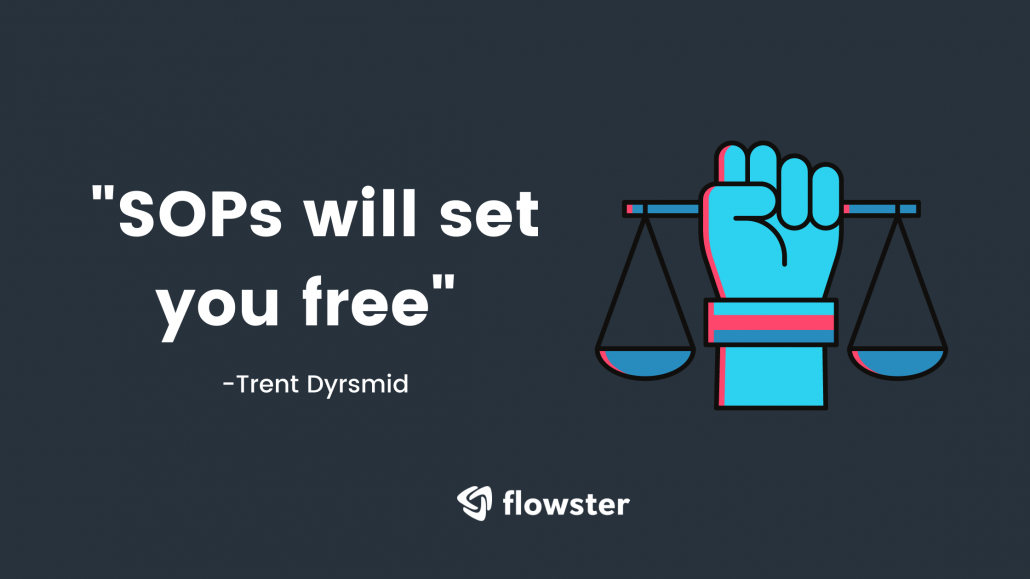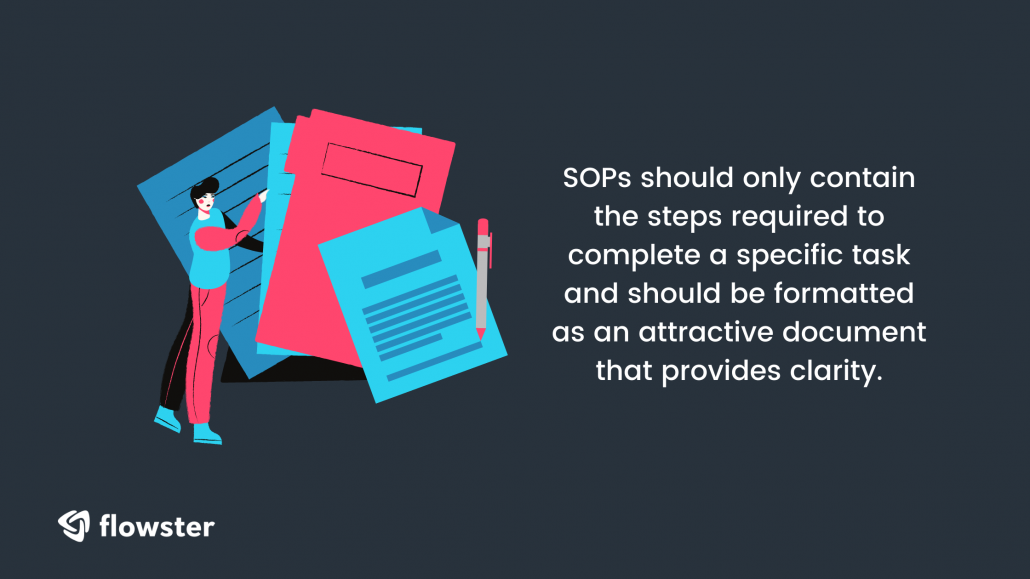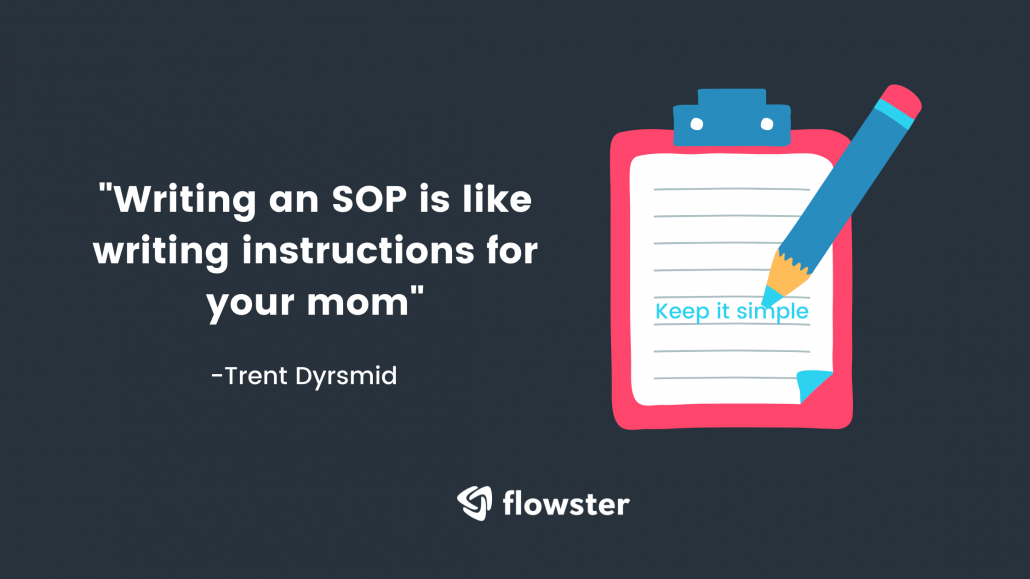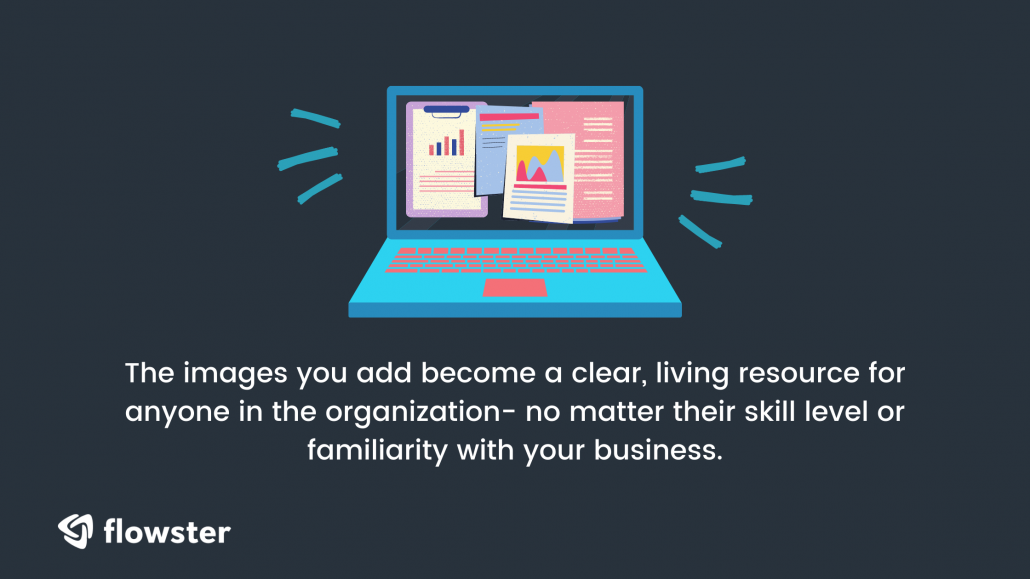Standard Operating Procedures are crucial for any business. Whether you’re a small company or a large corporation, SOPs can help streamline your processes and make them more efficient.
This blog post will show you how to create SOPs that are easy to follow, simple to update, and will produce the best results possible.
Learn how easy it is to create a step-by-step guide for your business with Flowster. You’ll be able to produce the best results possible, have an easier time updating your content, and get more done in less time!
For example, here is a template for managing your social media. It can easily be assigned to a team member or virtual assistant.
What are Standard Operating Procedures (SOPs)?
SOPs typically provide necessary instructions, tools, and requirements for running a process.
Standard Operating Procedures are a critical component of operational planning, ensuring efficient and effective execution. An SOP is an ideal way to define the processes for an organization or department.
Your business will function smoothly with appropriate guidelines for expected standards in accomplishing tasks, methods used to deal with different situations, and other actions taken during routine operations.
These guidelines serve as a resource for managers and employees, ensuring consistency across different departments and producing a unified voice across an organization.
They provide a written playbook for staff and a key point of reference when performing operational processes.
“Writing” an SOP usually entails developing one’s own set of instructions for the practical aspects within their personal field. Once written, these instructions can be called a “Standard Operating Procedure.”
This definition can refer to guidelines on completing established procedures quickly and accurately without any underlying knowledge by personnel other than what is clearly described in the procedure.
Even Small Businesses Can Benefit From SOPs
Many small businesses don’t take the time to create Standard Operating Procedures (SOPs) because they feel overwhelmed by all they face day-to-day.
But it’s important for your business to create SOPs for day-to-day tasks that can be used if a team member is unavailable, or when a new team member is onboarded.
For example, procedures on how to respond to customer requests or perform certain duties can be invaluable.
This requires advance planning and extra work upfront but will end up saving you time in the long term when it comes time again. (Side note: Flowster’s Marketplace can take away the pain by providing pre built SOPs that you may be able to use out of the box, or with minimal customization.)
When Should I Write SOPs for My Company's Processes and Procedures?
If you are functioning in a job or business that has recurring tasks and processes, then it’s time for SOPs.
Developing a set of best practices for your company or organization will significantly improve your company’s efficiency and productivity. Documenting the basic steps in a sequential order removes the need to reinvent the wheel each time.
The purpose of SOPs can vary depending on what type of company you’re operating; sometimes they serve as compliance guidelines (ensuring policies are followed by all employees), other times they’re meant to improve efficiency (removing repetitiveness within the work environment).
It’s important to note that if your organization is spending significant amounts of time trying to figure out how or when someone does something without having words on paper about it, it’s time for an SOP.
In addition, changing tasks from one person to another requires an upskilling that slows down processes and releases bottlenecks within the business. The process can become incredibly inefficient as new team members learn how to perform in their new role.
That’s where SOPs come in – they help close gaps during transitions so that work is being distributed effectively and ensures no tasks are left unfinished.
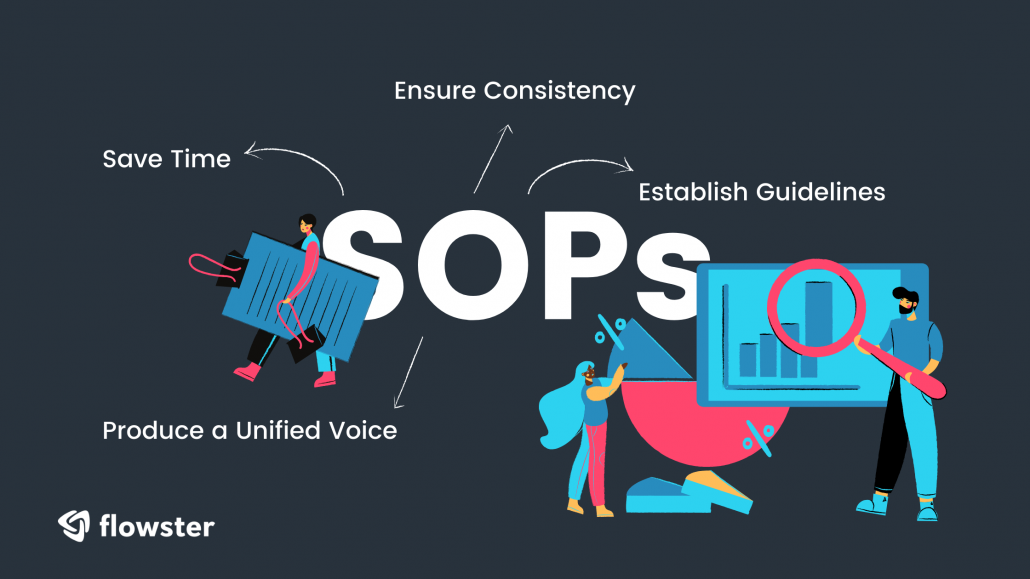
How to Write an Effective SOP
First, define the objectives of the SOP. Then, identify all the steps that are required to complete the process or procedure.
Next, organize these processes into an ordered list making sure they are simplified to isolate only the steps necessary for completion. (Essentially, you are building an outline.)
Finally, format an attractive document with headings and subheadings to provide clarity and simplicity.
One of the most important things to keep in mind when writing SOPs is that they should be written from a practical perspective. Here are some simple guidelines for end user-focused content:
- Be Friendly – People want their work done with kindness, not hard stares or an attitude; it’s better if you can make them smile while doing what needs to be done!
- Make sure to use clear language and can be understood by someone who has little to no background for this task
- Keep it short and sweet – don’t add additional information unless it’s helpful
- State the purpose or reason for doing something (i.e., step number one is necessary because without this action occurring there will likely not be enough time left on your shift, etc) – many people appreciate context
And finally, since your SOP may change at any time as the need arises, create a culture where it is expected that team members update SOPs as necessary. These updates can be made by the original author, or anyone with the authority to do so. (We strongly recommend all team members either update SOPs, or at a minimum make suggestions for updates.)
How to Format Your Text for Readability
Instructions should be written in a way so anyone can understand them. What does this mean?
- Writing instructions in plain English
- Avoiding acronyms and jargon
- Breaking up the text with headers or bullet points where needed, and
- Providing additional detail when relevant
As Flowster’s Co-Founder Trent Dyrsmid says, “Writing an SOP is like writing instructions for your mom.” (No offense to the moms out there, this is simply to say, write it for someone who hasn’t done this work before.)
There are a few main factors in determining the readability of text.
The first thing is, of course, font size. However, you can also make your text easier to read by using a lighter color and adjusting paragraph spacing.
Additionally, readers will be more inclined to finish reading if the text is broken up into shorter sections. To achieve this goal remember to use headings and subheadings when appropriate.
Improve Your Standard Operating Procedures by Including Images
Images can make procedures easier to follow and may reduce errors because people will be able to see what their next steps are. They also create a more personal experience for employees who are reading them. So if you’re looking for ways to better document your business’s processes, try adding images!
Here are five reasons why images are so important in Standard Operating Procedures (SOPs):
- Images can help people visualize exactly what they need to do.
- They make it easier for someone who is visually impaired or has a reading disability.
- You can reduce the number of words on a page, making the document more concise and easy to follow.
- They allow people with different learning styles – auditory, visual, kinesthetic – to learn at their own pace and level of understanding.
- They reduce mistakes because people have fewer chances of misinterpretation.
It is NOT necessary to add many words when a screenshot does a better job of showing what you mean. Let visuals do the talking and keep that SOP feeling light, breezy, and free from blocks of text!
Imagine how much time this will free up from unnecessary formatting changes! Gone are the days of spending HOURS deciphering what someone wrote.
Whether you’re creating SOPs for the first time, or getting ready to review them with your team, here are some great tips that will help you create some rocking Standard Operating Procedures.
How to turn your SOPs into bulletproof processes:
- Always have a clear purpose for what you’re doing.
- Make sure that all the roles and responsibilities are clearly defined.
- Add screenshots of your processes where they are applicable.
- Proofread it once you’re finished. Just because you wrote it doesn’t mean there aren’t mistakes. Better yet, have a team member work through your SOP when they do the task and ask clarifying questions as needed – just make sure that one of you ensures the SOP is built out to reflect those clarifications!
- Make sure to keep your SOPs up to date. It’s the best way to communicate effectively, efficiently, and in a timely manner.
Remember, the purpose of an SOP (Standard Operating Procedure) is to standardize your processes. The more standardized it is, the less human judgment there is in the task, and thus the more easily it can be done by someone else. If you eliminate all judgment, you can even automate the task!
Create Your Own SOP from Scratch
If you’re new to this, you can also create SOPs from scratch with ease!
Go check out the article What is an SOP? How to Create Your First SOP From Scratch. The article will show you how easy it is to create your own unique SOPs from scratch.
Want a Shortcut to Your First SOP?
Check out the SOP templates available in Flowster’s Marketplace.
Jump in with templates you can use out of the box, or customize them to meet your needs. (No time to customize? Take advantage of our Done For You service and have us build custom SOPs from scratch.)

